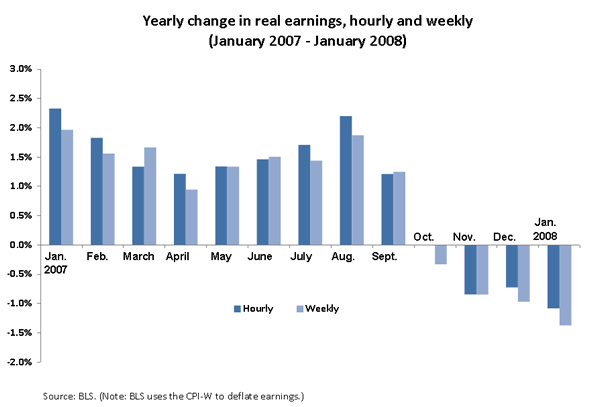See Snapshots archive.
Snapshot for February 20, 2008.
Real wage reversal persists
Data released this morning by the Bureau of Labor Statistics show that a combination of slower wage growth and faster inflation has led to falling real hourly and weekly earnings for most workers.
The Figure shows the yearly change in real earnings for the approximately 80% of the workforce that are non-managers in services and blue-collar factory workers. After handily beating inflation last year, wage growth began to slow as the economy lost speed in the last quarter of 2007. A year ago, annual hourly wage growth before inflation was 4.3%; this year (from January 2007 to January 2008), it was 3.7%.

Inflation, conversely, driven up by higher energy prices, is growing about twice as fast as was the case one year ago.
This combination has led to the dramatic shift in the buying power of workers’ paychecks. A year ago, real hourly and weekly earnings grew on a yearly basis by over 2%; this January, they are both down by about 1%. Note also that over the past two months, due to the decline in average weekly hours—a function of the weakening job market—real weekly earnings are falling more quickly than hourly earnings.
These trends have important implications. First, falling real wages will likely lead to diminished consumption, reinforcing slower macroeconomic growth. Second, the reality of squeezed paychecks for most workers helps to explain the primacy of economic concerns among voters in the presidential primaries.
